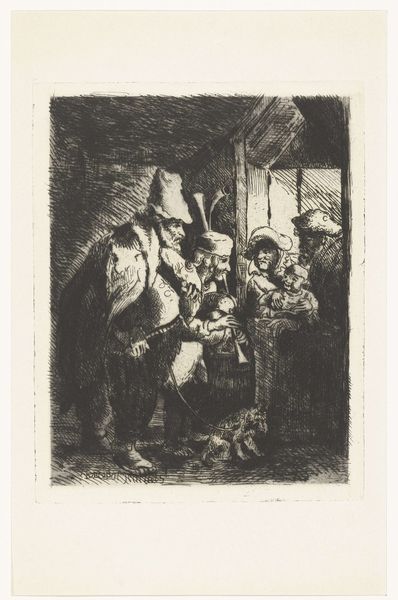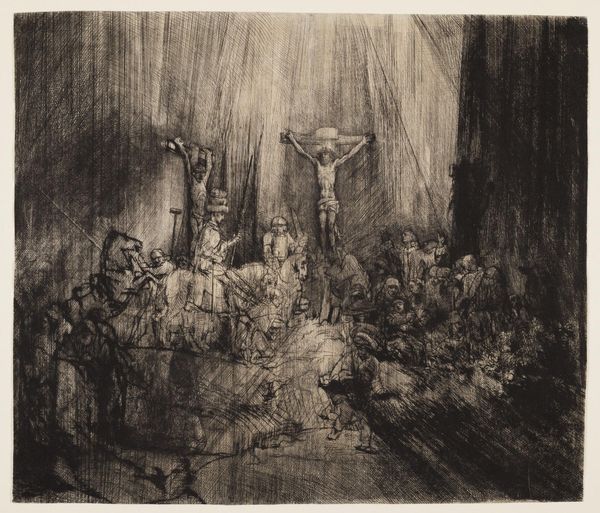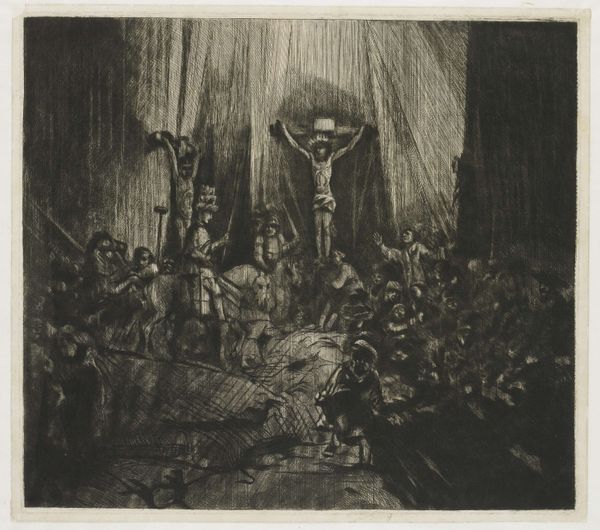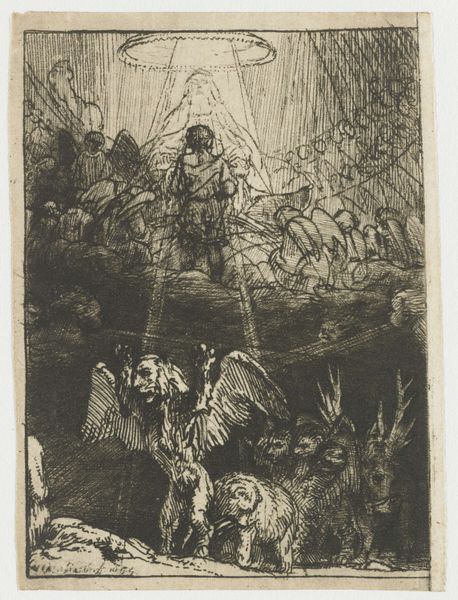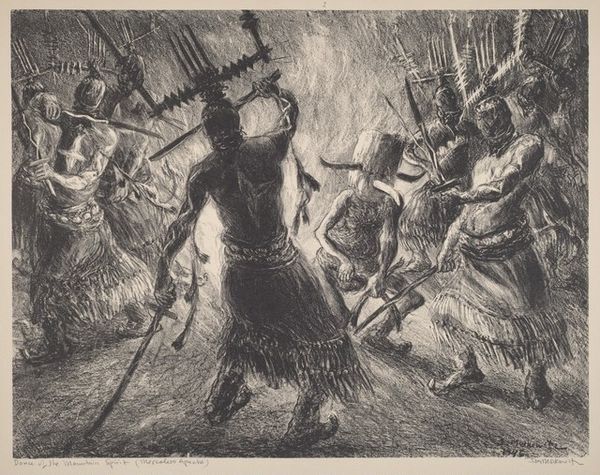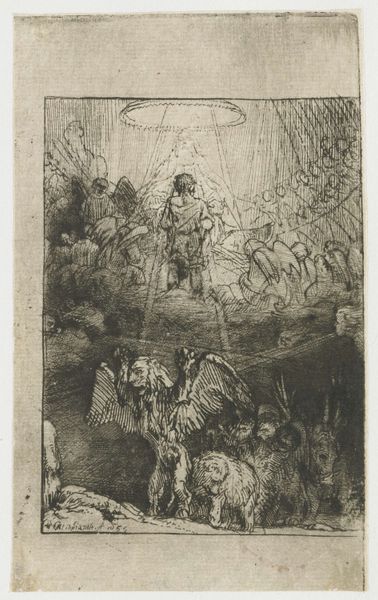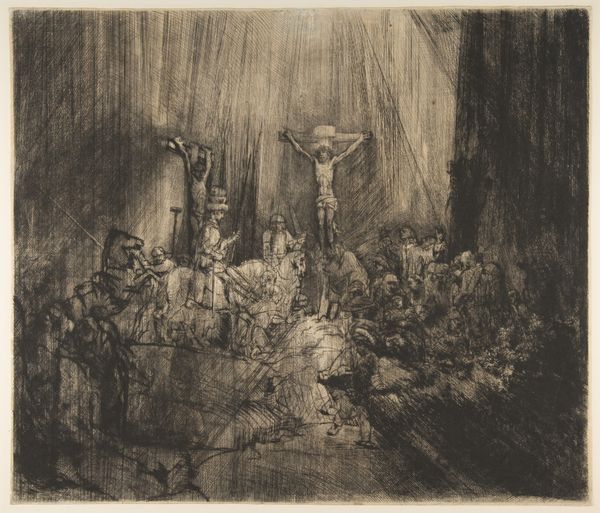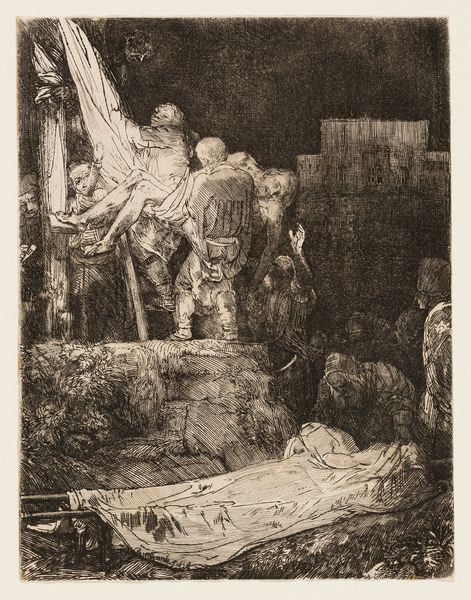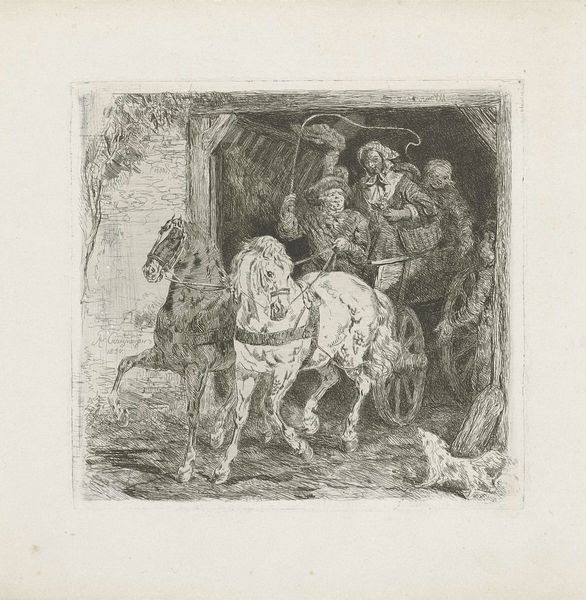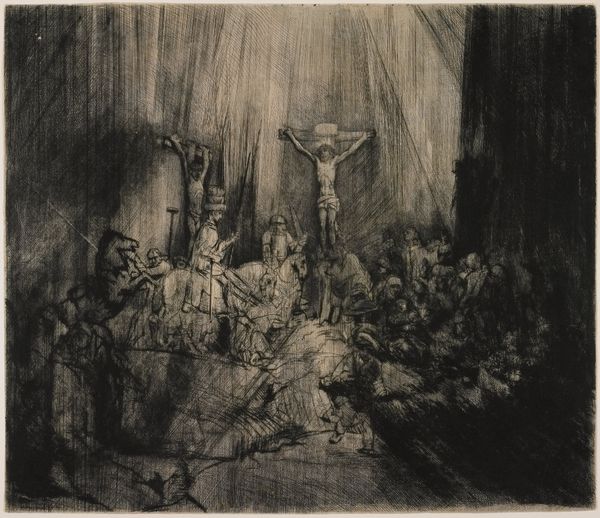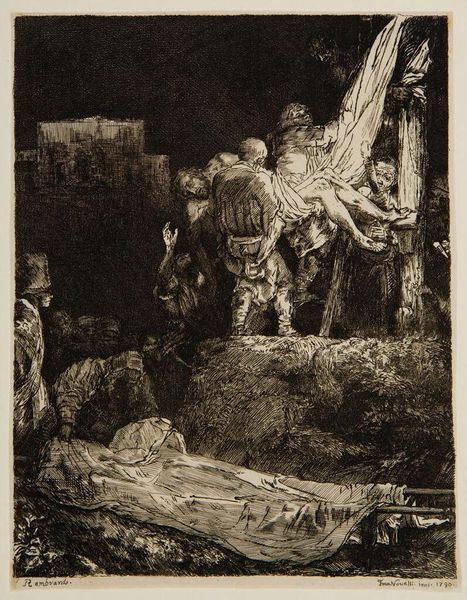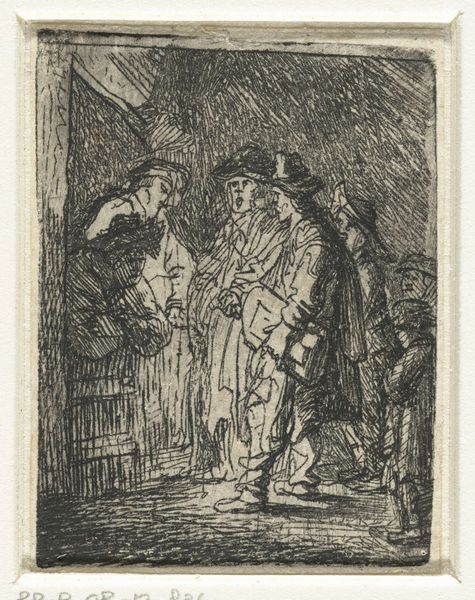
print, etching
#
baroque
# print
#
etching
#
figuration
#
history-painting
Dimensions: height 222 mm, width 230 mm
Copyright: Rijks Museum: Open Domain
Curator: Here we have "Christ before Pilate: large plate", an etching by an anonymous artist after 1635, currently housed in the Rijksmuseum. It’s a deeply affecting print. Editor: The immediate impression is bleak, almost claustrophobic. The figures are packed together in the dark. You really feel the tension, the anticipation of what’s to come for Christ. Curator: The work exemplifies the Baroque emphasis on emotion and drama. The artist captures a pivotal scene, rich with historical and theological significance, inviting a deep engagement with themes of injustice, power, and faith. Considering this within the power dynamics of the period, we are also reminded of the role imagery played in the assertion of authority, or even challenges to it. Editor: Absolutely. Looking at the depiction of Christ himself, there's a real vulnerability. His expression seems a mix of pain and resignation. It forces you to contemplate his physical suffering, but also the societal and political machinations at play. And the way the artist renders his chained wrists... the message is palpable. Curator: Note how the etching technique enhances this reading. The intense contrasts of light and shadow add to the dramatic intensity. We need to understand how this composition and the scene have been used as political symbols and in different struggles around the world. This is also the reason I am wary of his almost angelic whiteness as the central and suffering figure of humanity, knowing its complex symbolic value and use in history. Editor: A crucial point. Whose stories are amplified, and who is placed in the shadows, quite literally, becomes a matter of representation, doesn’t it? It forces a dialogue, for me, between historical artistic intent, and contemporary interpretations of power structures. Curator: Precisely. Studying it requires us to look not only backward but critically forward, ensuring these conversations surrounding race, identity, and faith persist. Editor: I leave here with a heightened awareness of art's ability to act as both historical document and a powerful mirror reflecting our contemporary concerns. Curator: It reminds me that this image is just one moment in history, constantly reshaped by evolving socio-political currents, never existing in isolation.
Comments
No comments
Be the first to comment and join the conversation on the ultimate creative platform.
